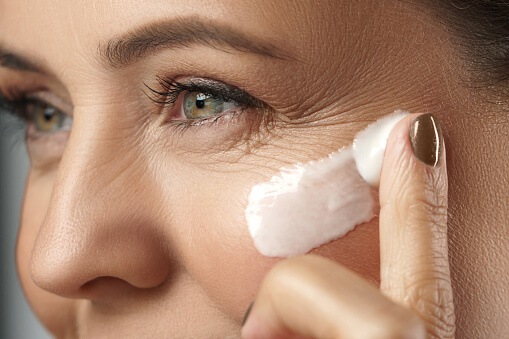I’m often asked: “which industry is worse when it comes to ageism? Fashion or beauty?”
The majority of people assume it’s beauty – after all, it’s the creator of anti-ageing products, and their continued existence only serves to underline the narrative that ageing is bad. However, I would say fashion is worse. Yes beauty is still predominantly youth focused, and there are concerns about targeting older consumers at the detriment of alienating younger consumers. But, unlike fashion, more of the beauty industry is at least aware of the issue and trying – with varying degrees of success – to address it.
The beauty industry does seem to be tuning into the issues, and more brands are attempting to be more inclusive and ‘pro-age’ which is encouraging. There are upcoming challenger brands like Jones Road (founded by THE Bobbi Brown) , Better Not Younger and 19/99 whose Unique Selling Points lie in being age-inclusive and age-positive. Then there are more established brands like Mac, L’Oréal and Charlotte Tilbury who are actively acknowledging and targeting the ‘older’ consumer by becoming more age-inclusive with their imagery, products and branding.
But there’s also a sense of confusion – and perhaps even panic.
Because alongside this age-inclusive, pro-age narrative still sits anti-ageing messaging – sometimes even within the same brand. Take the other day: when passing the store of a well-known British beauty and aromatherapy brand, I noticed two posters for the same product, one outside the shop on the board and one in the window. One advertised it as “pro-ageing”, the other “anti-ageing”... completely opposed messaging.
This contradictory messaging isn’t uncommon. Terms like ‘pro-age’, ‘ageful’, ‘age-well’ are mixed in with ‘age-repair’, ‘age-correct’, ‘age-defy’ and so on. Even when a brand seems to fully presents itself as having ‘pro-age’ values, it is undermined by its Pay-Per-Click search engine ads that say ‘anti-ageing’. This is one of the main reasons we, at The Bias Cut, struggle to collaborate or partner with beauty brands – we love collaborations but so many have conflicting and confusing messaging around ageing, which goes against what we so staunchly believe in.
The root of the issue – and how to address them - is twofold:
- There’s still a huge amount of lack-of and misunderstanding around ageism and ageing. Brands, and those working in them at every level, need to be fully educated on the topic to truly navigate, understand and address the nuances.
- Anti-ageing products are still the #1 selling products in the beauty industry. So even when a brand doesn’t want to peddle the anti-ageing message, they feel they have to, for fear of a drop in sales. This is where bigger brands have the responsibility to make a change. Smaller brands can educate and influence, but it’s the bigger brands who often have the overriding power to change the narrative and language around ageing in beauty – to the point where anti-ageing products could become obsolete.
With this said, the fact beauty brands are increasingly pushing these - albeit mixed - messages is still a positive sign; it indicates attitudes are shifting and that they are listening to increasing consumer demand for a more age-positive approach. But brands that have – or want to want to have - age-inclusive, pro-age values need to hold their nerve and focus on consistency. Because that’s the true mark of authenticity, and brands should give their consumers much more credit as they are savvy in spotting inconsistencies and tokenism. It may be gradual, but the tide is turning, the narrative is shifting, and those that champion and lead by example will reap the ultimate rewards.










